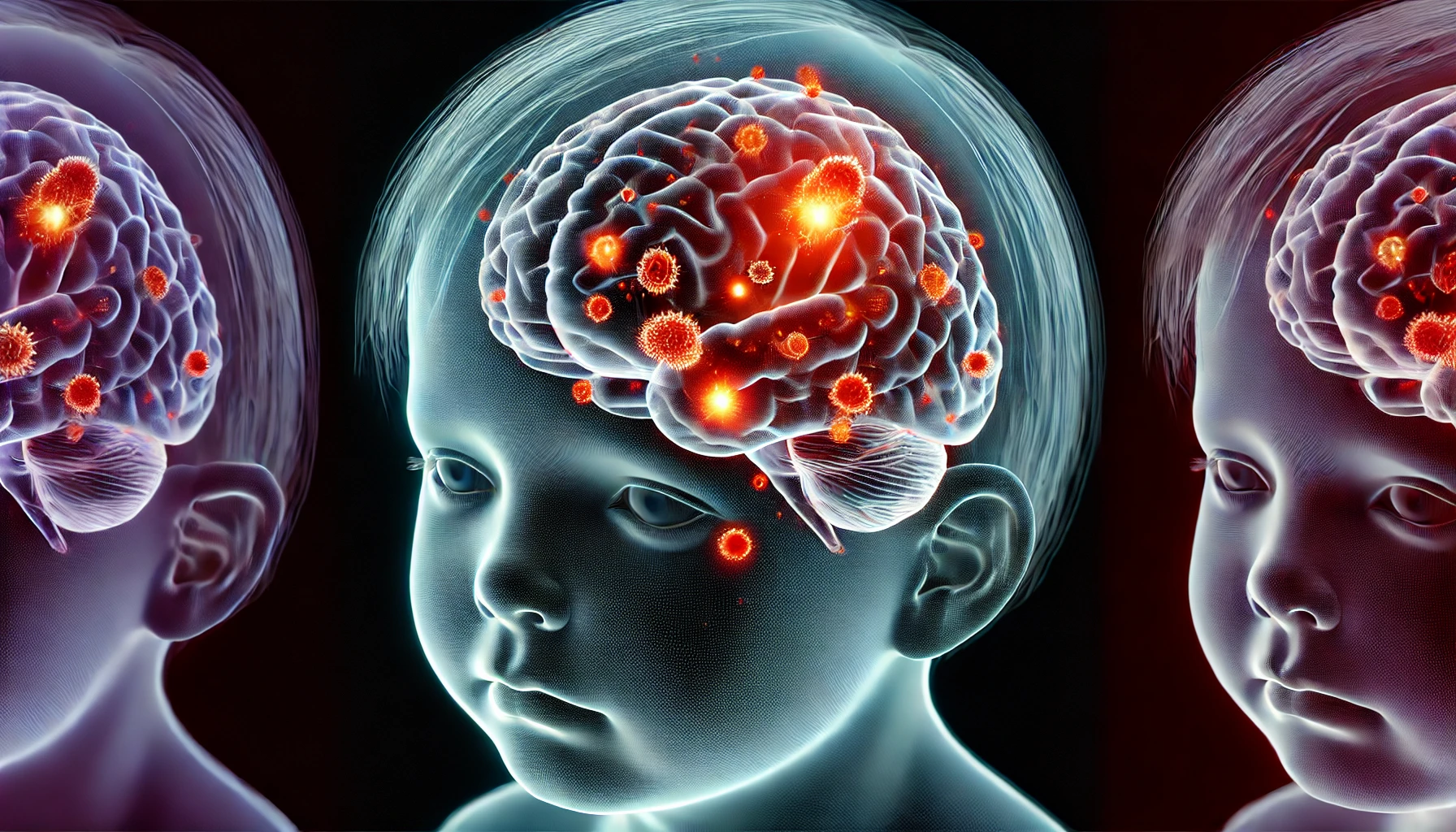This post was written with Consensus AI Academic Search Engine – please read our Disclaimer at the end of this article. Meningitis is a serious medical condition characterized by the inflammation of the meninges, the protective membranes covering the brain and spinal cord. This condition can be caused by various infectious agents, including viruses, bacteria, and fungi, as well as non-infectious factors. Understanding the symptoms, causes, and modes of transmission of meningitis is crucial for early diagnosis and effective treatment.
Symptoms
The symptoms of meningitis can vary depending on the causative agent and the age of the patient. Common symptoms include headache, fever, photophobia (sensitivity to light), nuchal rigidity (stiff neck), myalgia (muscle pain), and fatigue1 2 4. In infants and young children, symptoms may also include irritability, vomiting, drowsiness, and a skin rash7. The severity of these symptoms can range from mild to life-threatening, and early recognition is essential to prevent serious complications4.
Causes
Meningitis can be caused by a variety of infectious agents:
Viral Meningitis
Viral meningitis, also known as aseptic meningitis, is the most common form and is typically less severe than bacterial meningitis. Enteroviruses are the primary cause of viral meningitis, but other viruses such as herpesviruses, influenza viruses, and arboviruses can also be responsible1 2 3 4 7. The clinical manifestations of viral meningitis are similar regardless of the specific virus involved, making early diagnosis challenging1 2.
Bacterial Meningitis
Bacterial meningitis is a more severe form of the disease and can lead to significant morbidity and mortality if not treated promptly. The most common bacterial pathogens include Streptococcus pneumoniae, Neisseria meningitidis, and Haemophilus influenzae5 6. Bacterial meningitis can result in serious complications such as deafness, blindness, cerebral palsy, seizures, and cognitive impairment, particularly in infants and immunosuppressed individuals7.
Fungal Meningitis
Fungal meningitis is less common and typically affects individuals with weakened immune systems. It can be caused by fungi such as Cryptococcus neoformans and Coccidioides species1.
Other Causes
Non-infectious causes of meningitis include certain medications, autoimmune diseases, and cancers. Chronic meningitis, which persists for more than four weeks, can be caused by partially treated bacterial infections, tuberculosis, syphilis, Lyme disease, and fungal infections9.
Transmission
The transmission of meningitis depends on the causative agent:
Viral Meningitis
Viral meningitis is often spread through direct contact with respiratory secretions, fecal matter, or contaminated surfaces. Enteroviruses, for example, can be transmitted via the fecal-oral route, particularly in settings with poor sanitation1 2 3.
Bacterial Meningitis
Bacterial meningitis can be transmitted through respiratory droplets from coughing or sneezing. Close contact with an infected person, such as living in the same household or sharing utensils, increases the risk of transmission5 6.
Fungal Meningitis
Fungal meningitis is not contagious and is typically acquired from the environment. For instance, Cryptococcus neoformans can be inhaled from soil contaminated with bird droppings1.
Eosinophilic Meningitis
Eosinophilic meningitis, caused by the parasite Angiostrongylus cantonensis, is transmitted through the consumption of raw or undercooked snails, slugs, or contaminated produce10.
Conclusion
Meningitis is a complex condition with diverse causes and symptoms. Early recognition and treatment are crucial to prevent severe complications and improve patient outcomes. Understanding the various infectious agents, their modes of transmission, and the clinical manifestations of meningitis can aid in the timely diagnosis and management of this potentially life-threatening disease.
Disclaimer
The content presented in this blog is generated by Consensus, an AI-powered academic search engine, and is based on publicly available scientific literature. While every effort is made to provide accurate, up-to-date, and well-researched information, the content is intended for informational and educational purposes only. It does not constitute medical advice, diagnosis, or treatment. Always consult a qualified healthcare professional before making any decisions regarding medical conditions, treatments, or medications. The AI system’s analysis may not cover all perspectives, emerging research, or individual cases, and it is not a substitute for professional expertise. Neither the blog publisher nor the developers of the AI-powered search engine are responsible for any actions taken based on the information provided in this content. Use of this information is at your own risk. Citations to the original scientific studies are included for reference, but these studies should be reviewed in full and interpreted with the guidance of a healthcare or research professional.
If you are experiencing a medical emergency, please seek immediate attention from a healthcare provider.
